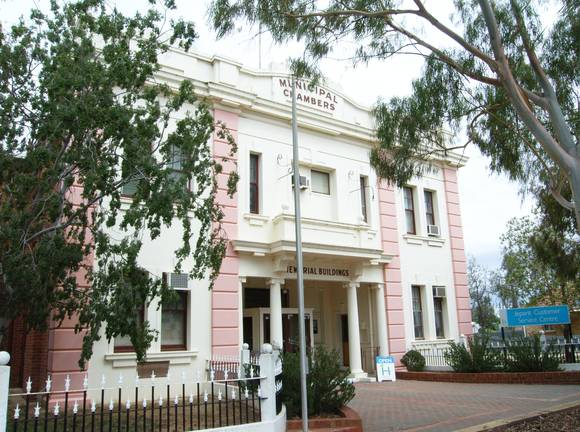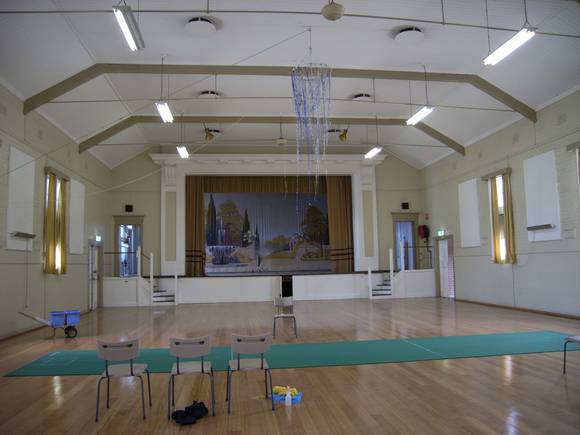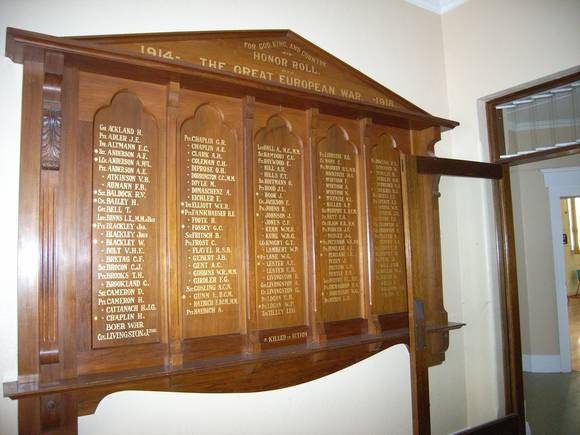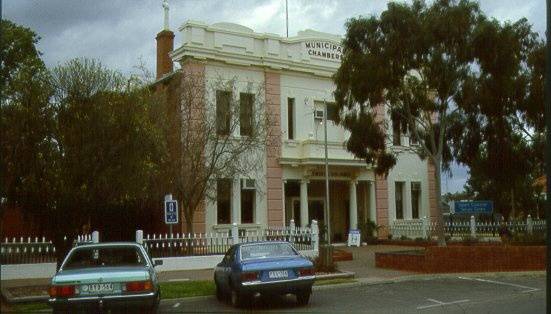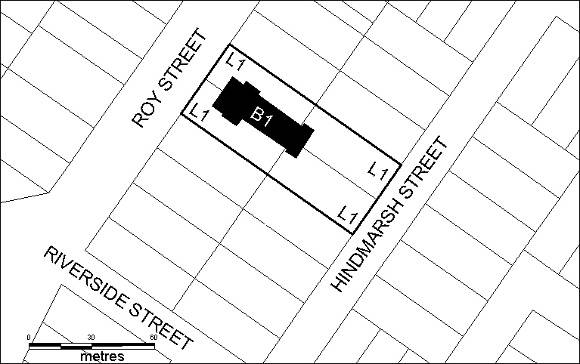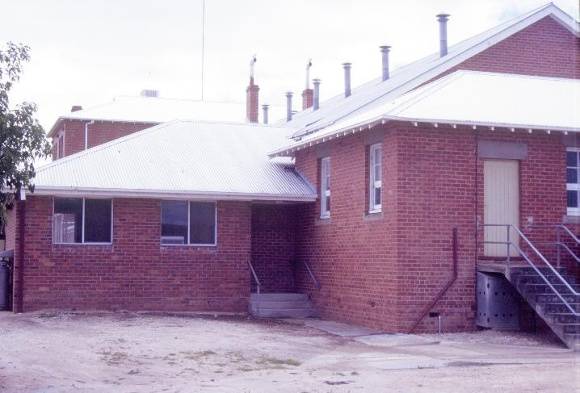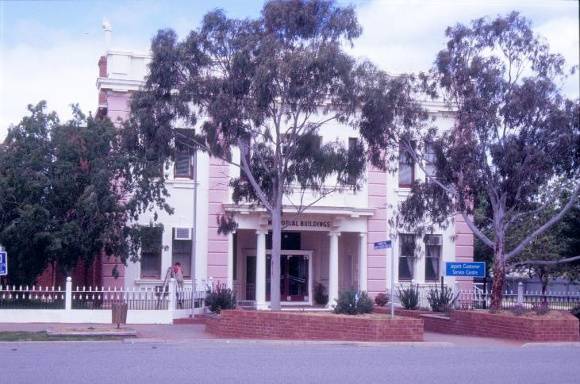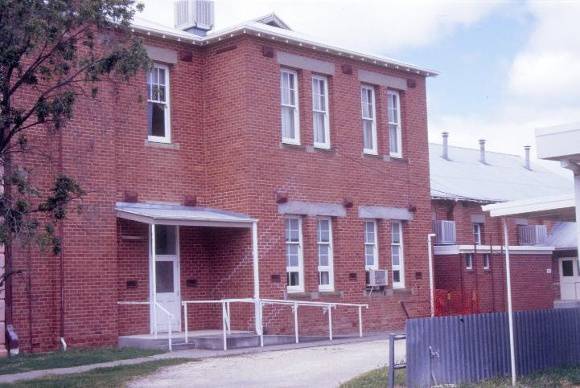| Back to search results » | Back to search page » |
|
SOLDIERS' AND CITIZENS' MEMORIAL HALL AND FORMER MUNICIPAL CHAMBERS
Statement of Significance
What is significant?
The municipal building at Jeparit was a combined effort of the Mechanics
Institute, the Returned Sailors and Soldiers Imperial League of
Australia (later known as the Returned & Services League of
Australia), local citizens and the shire council. After the First World
War the Mechanics Institute needed new premises for a library and
reading room, the RSSILA wanted clubrooms and the citizens of Jeparit
needed a public hall. A committee made up of "soldiers and
citizens" approached the shire council, who were planning to build
new offices and chambers, with the idea of a combined building. The
administrative centre of the Dimboola Shire had shifted from Dimboola to
Jeparit in 1914 after years of increasing discontent in the northern
section of the shire.
The committee raised the equivalent of approximately £4000 in cash and
land and the shire council provided the remainder of the funds. The
Ballarat firm of architects Clegg and Morrow designed the building and
the local firm Lovell Dudden and Jones were the builders. The contract
price was £7700 with about £400 for extras. On 5 February 1924 the
foundation stone was laid by the Hon. Arthur Rodgers, former Minister
for Trade and Customs and former assistant Minister for Repatriation.
The building, a memorial to those who fought in the war, was opened on 2
June 1925. It is a two-storey red brick building with rendered front
facade, Ionic order columns to the recessed porch and trabeated
treatment to the facade. The ground floor comprised a library and
reading room, soldiers' lounge and meeting room, billiard room, public
hall with stage (later used as a cinema), dressing room and supper room.
Upstairs was occupied by the shire offices and chambers. The local
furniture maker Chaplin made chairs and a large timber table for the
municipal chambers which was assembled in the room.
How is it significant?
The Jeparit Soldiers' and Citizens' Memorial Hall and former Municipal
Chambers is of historical, social and architectural significance to the
state of Victoria.
Why is it significant?
The building is of historical and social significance as one of a small
group of shire buildings dedicated as World War I memorials. Other
memorial halls include those at Boort, Kerang, Donald and Leongatha,
regions with extensive soldier settlement. The dedication of a key
building in the town as a war memorial is a tangible reminder of the
profound impact the First World War had on Australian communities, made
more poignant in this context as the shire included many people of
German origin.
The building has historical significance as a rare example of a
municipal building designed for a multi-purpose use as municipal offices
and a community facility. Although there are a number of examples with
multiple public uses such as the Buninyong Town Hall which combines a
town hall and courthouse, the mix of civic and community use is more
unusual.
The building has social significance for the high value placed in it by
the local and surrounding community. It has long played an important
role in community life and, more widely, in the former Shire of Dimboola
as a place of decision making, entertainment, learning and meeting. The
impetus for the building came from the local "soldiers and
citizens", highlighting the importance of such a facility for an
isolated rural community.
The building has architectural significance as a fine, essentially
intact example of an Inter-War Free Classical style building. It has
classical elements but also references to the Moderne style with the
stylised keystone detailing around the windows. The building retains
original furniture and fixtures including the fine timber staircase,
strong room in the former rate collector's office, the large board room
table and chairs in the municipal chambers built at Chaplin's furniture
factory in Jeparit and assembled in the room, purpose-built chairs with
rising sun motif in the RSL room, scenery back drop to the stage painted
by Edgar Finlay, plaques and honour boards throughout the building.
Group
Community Facilities
Category
Hall Public


